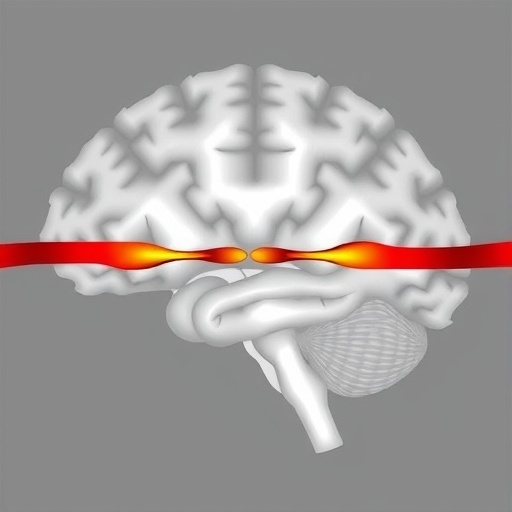LOS ANGELES — Today's society is growing in population and productivity puts ever higher demands on the Internet, and without scientific developments to provide ways meeting our traffic needs, it will begin to clog. Mapping photons to a metal surface and converting them to a particular kind of electron oscillations, called plasmons, researchers from Switzerland, Germany and the US collaborated to develop a new way to impart information into the light signals sent over the Internet's optical fiber networks.
Their work developing these broadband plasmonic modulators, that operate at greater than the 100 Gbit/s limit of photonic devices for a single carrier, will be presented at the Optical Fiber Communications Conference and Exhibition (OFC), held 19-23 March in Los Angeles, California, USA.
The jump from sending electronic signals over wires to sending optical signals over fibers revolutionized the Internet, offering significantly higher capacity and transfer rates. The electronic chip-bred signals from computers were encoded into light as modulations, which could then travel at relativistic speeds across optical fibers.
We have now reached a point, however, where converting the electric signals into optical ones can be a bottleneck to optical communication.
Enter: plasmons. Plasmons are waves in the energetically fluid-like "sea" of electrons on many conducting metals such as gold. Much like ripples of water on a pond's surface from a skipping rock, plasmons carry energy from light striking a surface as waves of collectively oscillating electrons. Under the right conditions, light can excite these microscopic plasmons and convert the signal from a light wave — purely photonic in nature — to a plasmon that travels along the surface of metal.
"Rather than relying on photonics, we now work with plasmonics," said Claudia Hoessbacher the lead author of the paper and a member of the Institute of Electromagnetic Fields at ETH in Zurich, Switzerland. "The work was triggered by realizing that we have come to the limits of silicon photonics. Silicon would no longer give us a higher speed, nor would it allow us to become more compact."
The new modulator device features two sets of gold electrode pairs separated by a narrow slot less than one hundred nanometers wide, hundreds of times smaller than a human hair. The slots are filled with an organic electro-optic material whose light refraction properties change predictably in an applied electric field.
Gold is amongst the most plasmonically active elements and these silicon-filled gaps act as waveguides for plasmons. The whole arrangement forms a micro-interferometer, where the resulting modulated signal arises from the combination of the signals travelling through each of the two electro-optic material paths.
Because these plasmonic components are metallic, they have the added benefit of potentially serving as their own electrical contacts.
The biggest advantages of these modulators, however, are their compact size and significantly wide bandwidth, which allows a higher volume of information flow by supporting a wider spectrum of frequencies. The large bandwidth is due to an almost instantaneous response of the electrons to electromagnetic fields. Although plasmons don't travel long distances efficiently, their compact size minimizes this drawback.
"Initially, we were afraid that the losses would be too high because the plasmonic losses are known to be high," said Leuthold, who heads the research institute at ETH. "Our second generation of the device brought the breakthrough. We realized that nonlinearities were way higher than what one would normally expect. Thanks to these high nonlinearities we could fabricate short devices and thus the losses would be sufficiently low as well."
The small size of these new devices is not completely without drawbacks. The compact size of the microscopic modulators also means they pose manufacturing challenges. For such precise assemblies, the group used lithographic techniques, where carefully exposed light patterns drive chemical processes that leave behind the desired electrode patterns.
"When you start working with devices that have sub-diffraction dimensions (i.e. way below wavelength) then the ultimate challenge is to master the fabrication," Leuthold said. "We need lithographic resolutions in the order of 20 to 40 nanometers."
Using modulation formats familiar to the optical communications community, researchers tested the device response over a range of 170 GHz. This was such a wide range of frequencies, they had to devise five different setups to generate all the radio frequency signals tested. According to Leuthold, this work continues in the hopes of even better results and potential applications for the next generation of optical communication links.
###
MEDIA REGISTRATION: Media/analyst registration for OFC 2017 can be accessed online. Further information is available on the event website at OFC, including travel details.
ABOUT OFC
The Optical Fiber Conference and Exposition (OFC) is the largest global conference and exhibition for optical communications and networking professionals. For more than 40 years, OFC has drawn attendees from all corners of the globe to meet and greet, teach and learn, make connections and move business forward.
OFC includes dynamic business programming, an exhibition of more than 600 companies, and high impact peer-reviewed research that, combined, showcase the trends and pulse of the entire optical networking and communications industry. OFC is managed by The Optical Society (OSA) and co-sponsored by OSA, the IEEE Communications Society (IEEE/ComSoc), and the IEEE Photonics Society. OFC 2017 will be held from 19-23 March 2017 at the Los Angeles Convention Center, California, USA. Follow @OFCConference, learn more OFC Conference LinkedIn and watch highlights OFC YouTube.
Media Contacts:
Rebecca B. Andersen
The Optical Society
+1 202.416.1443
[email protected]
Joshua Miller
The Optical Society
+1.202.416.1435
[email protected]
Media Contact
Joshua Miller
[email protected]
202-416-1435
@opticalsociety
http://www.osa.org
############
Story Source: Materials provided by Scienmag




